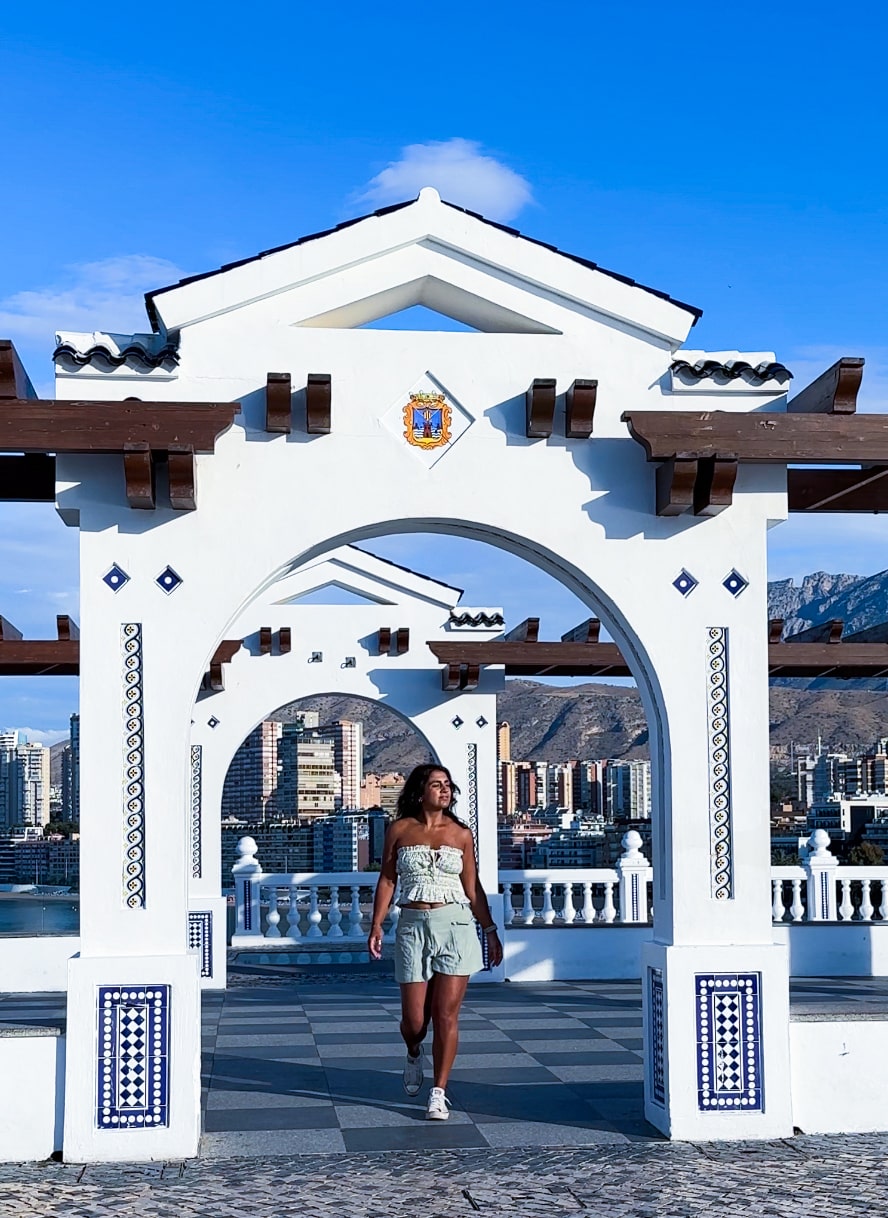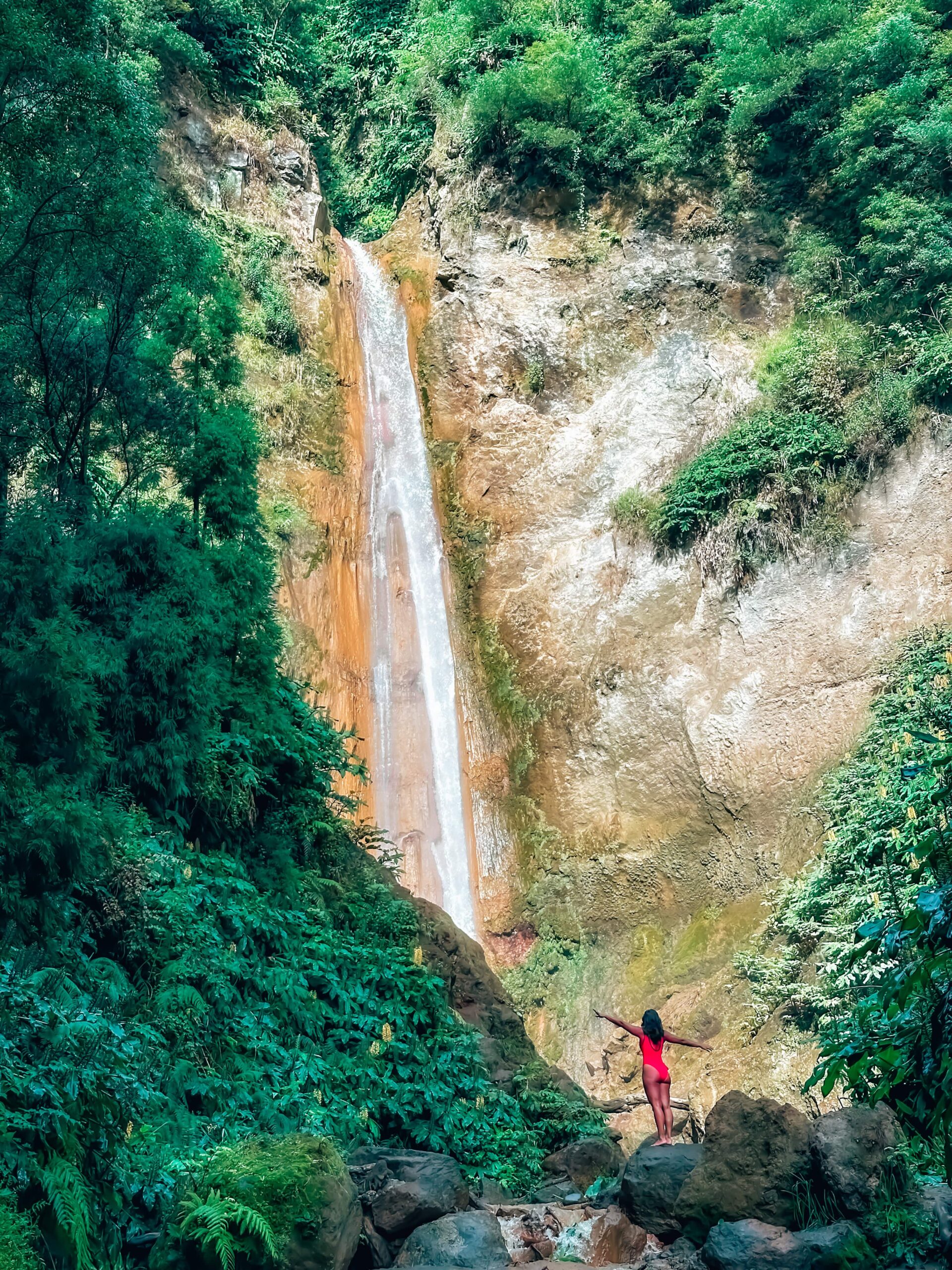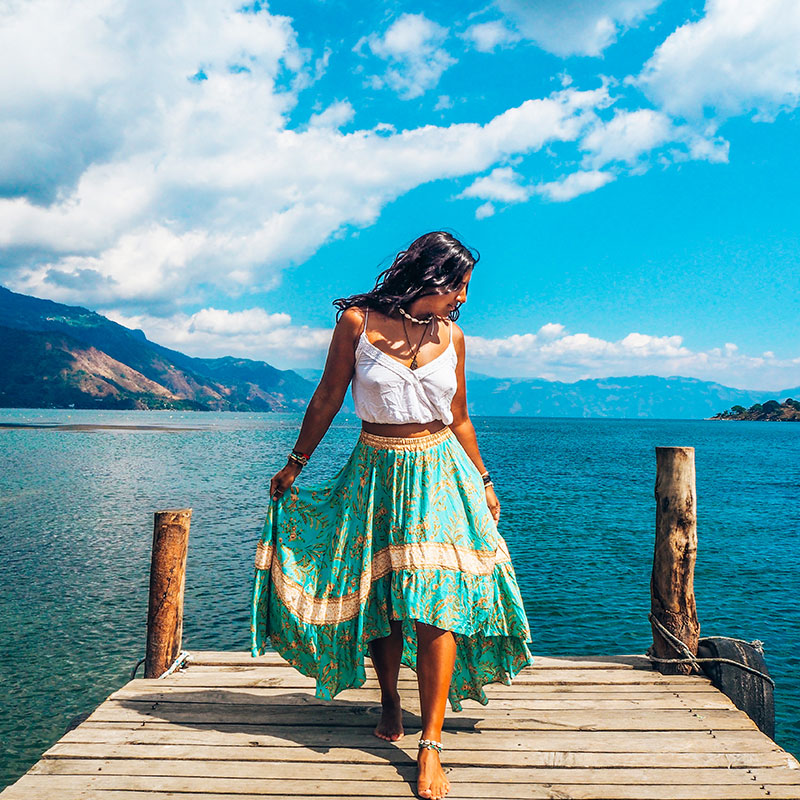If you've ever dreamed of going whale watching but have always been put off by the thought of travelling globally and facing rough seas to make your dream a reality. I have an epic travel hack – you NEED to go whale watching in the Azores! This Portuguese island chain is, together with Madeira, known as the "Hawaii of Europe" and is one of the world’s largest cetacean hotspots. The perfect place to start your whale watching journey and its only a five-and-a-half hour flight from London.
Did you know that you can spot blue whales in the wild off the coast of São Miguel, close to popular Ponta Delgada? Not only that, you can see fin, blue and sei whales, plus minke whales and many more. This part of Portugal has year-round sightings of whales and dolphins and you can spot up to 28 species of whales and dolphins.
During a 3-hour whale watching trip when I visited the Azores archipelago, I spotted an incredible 10 sperm whales, including calves, plus pods of bottlenose dolphins surrounding the boat and a pod of common dolphins darting around us. It was spectacular for my first whale watching experience and even the locals hail whale watching as a top activity to do when visiting the volcanic island chain.
Ultimate Guide to Whale Watching in the Azores:
- Whale Watching in the Azores Facts
- What month is best for whale watching on the Azores?
- What kind of whales can you see in the Azores?
- Which Azores island is best for whale watching?
- When to see blue whales in Azores?
- Is whale watching better in the Azores or Madeira?
- Can you see whale sharks in the Azores?
- What to Pack for whale watching in the Azores
- The best Whale Watching Tour in the Azores
- Where to stay on São Miguel
- Hiring a Car on São Miguel
| Essentials for the Azores |
| Find cheap flights to the Azores |
| Find hotels or hostels |
| Find activities and tours for the Azores |
| Get an eSIM for Portugal |
| Hire a car in the Azores |
Whale Watching in the Azores – The Facts
If you're considering booking a whale watching tour in the Azores, you're in the right place! Did you know that whales are spotted on around 98% of boating trips and more than 25 species have been reported in the Portuguese waters? The volcanic waters surrounding the Azores are teeming with wildlife and they provide a haven for young to feed and grow in the deep waters around the archipelago of islands.
Did you know that the Azores have created the largest marine protected area in the North Atlantic? At 300,000km2, it's nearly the size of Italy! One thing I love about the Azores is how important it is to local companies and to the government to protect the unique biodiversity of the island and the oceans.
Experiencing whales and dolphins in the wild is a huge privilege, but we need to protect their fragile ecosystems. Luckily, the tour companies place great importance on educating visitors as well as providing bucket-list experiences of seeing whales in the wild. The new marine protected areas are like underwater national parks which means human activity is limited and doesn't include direct interaction. This is the kind of nature and adventure tourism I can get down with. Remember, it's not ethical to swim with the whales or dolphins, but you can check out 20 Best Wild Swimming Spots in the Azores. Don't forget to read my 10 day Azores Travel Itinerary for Adventurers to plan your trip and don't miss the 7 Best Hot Springs in São Miguel, Azores.
>> Book the BEST whale watching tour in the Azores
What month is best for whale watching on the Azores?
May and June are the best times to visit the Azores for whale watching because this coincides with the Blue Whale migratory patterns and you stand the best chance of seeing these ocean giants in the wild. From April to June is also the best time to see fin and sei whales as they also migrate past the islands at this time.
If you're just happy for whale watching trips, you can visit all year round and stand a good chance of seeing the incredible sperm whales who are resident in the Azorean oceans. Visit during the summer months (June, July and August) for better weather and a greater abundance of whale activity to stand a better chance of seeing them.
What kind of whales can you see in the Azores?
The oceans around the Azores are teeming with wildlife and you can spot up to 28 species of dolphin and whale, with sightings all year round. It's worth checking migration patterns for species before you travel if you are hoping for a specific sighting. I visited at the end of September and was rewarded with sightings of 10 sperm whales (including calves) and pods of bottlenose and common dolphins. Here are some of the species you can spot at different times of the year in the Azores:
- Blue Whale
- Sperm Whale
- Bryde's Whale
- Fin Whale
- Minke Whale
- Northern Bottlenose Whale
- Pilot Whale (Long & Short-finned)
- Blainville's Beaked Whale
- Sei Whale
- Cuvier’s Beaked Whale
- Humpback Whale
- Atlantic Spotted Dolphin
- Striped Dolphin
- Bottlenose Dolphin
- Orca (Killer Whale)
- Common Dolphin
- False Killer Whale
- Sowerby’s Beaked Whale
- Risso’s Dolphin
- Dragoeiro
>> Book the BEST whale watching tour in the Azores

Which Azores island is best for whale watching?
Most of the popular whale watching tours in the Azores will go from São Miguel (the main island you fly into and where Ponta Delgada is located). This is one of the best places to see whales and dolphins in the wild – I took a tour from São Miguel and saw 10 sperm whales on my first tour there, along with countless pods of dolphins. If you don't have time to visit multiple islands or simply want to focus on one island, São Miguel is a great one to choose for whale watching. Other popular places for whale watching in this volcanic island chain include Pico, Faial and São Jorge which apparently are better for whale spotting. However it is not necessary to go to these more remote islands to see whales in the wild.
When to see blue whales in Azores?
The best time to see Blue Whales in the wild around the Azores is in May and June when the whales are migrating past the archipelago.
Is whale watching better in the Azores or Madeira?
While the Azores have long-since had a reputation as one of the best places in Europe to see whales in the wild due to their migratory patterns taking them directly through the Portuguese oceans. But it's worth knowing that both the Azores archipelago of volcanic islands and the wild island of Madeira are perfect locations for booking whale watching tours.Throughout the year, you can spot up to 28 species of whales and dolphins and this area off the coast of mainland Portugal is recognised as the largest whale sanctuary in the North Atlantic.
Can you see whale sharks in the Azores?
If you're travelling to the Azores to see whale sharks in their natural habitat, you should travel to the islands from July to October when you have the best chances of seeing these majestic creatures alongside mantas, blue sharks and mobulas. The best way to spot them is by booking a diving trip off the coast of Santa Maria Island, the most visited island by the world's largest fish. Often the whale sharks will be followed by an escort of thousands of tuna and smaller fish creating an incredible diving experience for those who book an off coastal experience.
>> Book the BEST whale watching tour in the Azores

What to Pack for Whale Watching in the Azores
If you're booking a whale watching trip in the Azores, here's the best items to pack. You won't want to forget these essentials to help you stay safe and well on your trip:
- Sunscreen – shop my fave sunscreens for brown skin!
- Ginger tablets for seasickness – take them 30 mins before you catch the boat
- Reusable water bottle to stay hydrated
>> Book the BEST whale watching tour in the Azores

The Best Whale Watching Tour in the Azores
The Azores have some incredible whale watching tours available from São Miguel Island and for many travellers, these are the best to choose for this island is the main entry point for the Azores from mainland Portugal. I've dreamt of whale watching from a boat since I was a little girl, but this was the first time I had the opportunity. I hoped I might be lucky enough to see one whale and some dolphins, but this trip surpassed every expectation and was a dream come true! Within just 3 hours on the boat (and in very calm waters so perfect for anyone who suffers with seasickness), we saw 10 sperm whales and pods of common and bottlenose dolphins surrounding the boat.
I booked with Terra Azul Azores and I can't recommend this company enough! They provide eco-adventure trips and pride themselves on a unique, sustainable and most importantly, ethical tour which protects the marine life and ensures the animal’s welfare is the top priority. I could tell within minutes of joining the trip, I had chosen the best tour operator. We started the day with our whale watching briefing focusing on the importance of respecting, protecting and conserving our ocean environment. Our expectations were managed, we went out to the boat feeling hopeful but unsure if we would spot even one whale or dolphin, but I had a feeling that day was a lucky day. It was an unforgettable experience and a dream come true to witness pods of bottlenose dolphins and common dolphins playing, feeding and dancing through the sparkling waves.
Where to stay on São Miguel
If you're looking for a place to stay on São Miguel, the most popular and busiest area is Ponta Delgada which is where you will find lots of restaurants and bars. This is a great area to base yourself as it is central to the island and easy to access anywhere with a hire car. Check out:
- The Farm - Azores Boutique House for a beautiful boutique hotel stay.
However, if you are hiring a car, I recommend looking outside of the busier areas. Check out these top hotels and unique accommodations:
- Doubletree By Hilton Lagoa Azores – a brand new hotel in up-and-coming area Lagoa
- Furnas Lake Forest Living – perfect for nature and adventure lovers!
Hiring a Car on São Miguel
If you are visiting the Azores, I highly recommend hiring a car on São Miguel – it is by far the best and most cost-effective way to get around the island. It is easy to navigate and drive around the island, and car hire starts from just £2 per day! If you prefer not to drive, I recommend booking a group tour in the Azores so you can access everywhere.
If you're travelling solo, I recommend reading Solo Travel in Portugal: The Ultimate Guide (2025)















